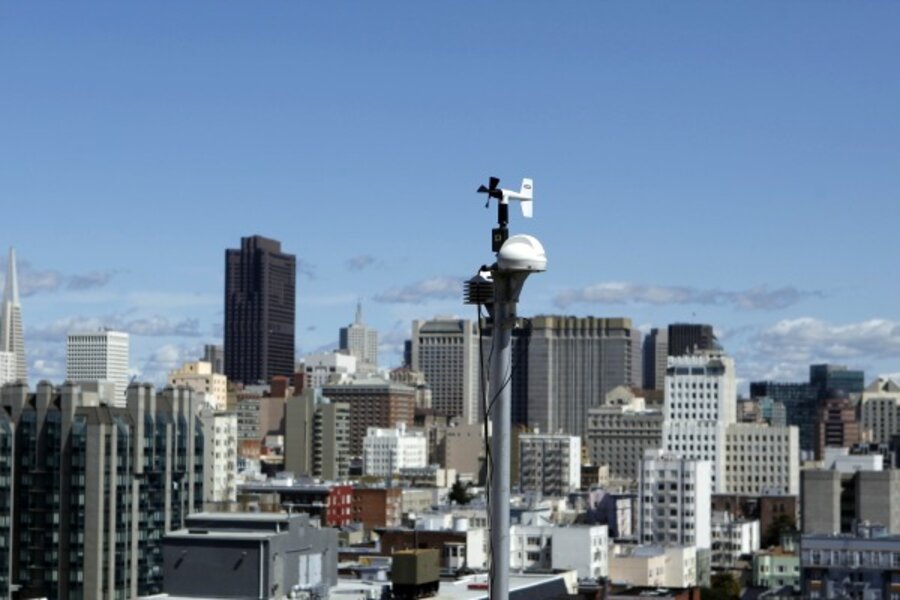How do we know Fukushima isn't a danger to US? Radnet says so.
Loading...
| Washington
Even as the devastated Fukushima Daiichi nuclear plant is rocked by earthquake aftershocks, such as the 7.0 temblor that hit northeast Japan Monday, US officials have insisted that America remains safe. Our network of radiation monitors has shown that only trace amounts of radioactive elements from Japan have floated across the ocean to North America, they say.
To which we say, radiation monitors? Since when has the US had a nationwide network of those?
For a long time, it turns out. Government agencies first began sniffing the national air for fallout from atmospheric nuclear weapons tests in the mid-1950s.
Though this effort has had several names, it is now called RadNet and is handled by the Environmental Protection Agency (EPA). RadNet has at least 200 monitoring stations spread throughout the 50 states and measures radioactive substances in air, precipitation, drinking water, and milk.
RadNet normally takes these measurements only periodically. But it also steps up activity at times of radioactive worry, such as after the 1986 Chernobyl nuclear accident, and now.
“EPA has an online map of these stations and provides updates on the results of its air monitoring as [it] relates to the Japanese nuclear incident,” says a Congressional Research Service study on technical aspects of the Fukushima crisis.
Nuclear crises come in all sizes, and US radiation monitoring must respond to them all. In 1976, a routine safety sweep detected high levels of radioactive iodine-131 on the hands and shoes of workers at the Peach Bottom nuclear plant in southern Pennsylvania. Plant officials sent nonessential workers home.
A local radio station reported a possible accident. “Things began to get tense,” according to a 1985 article in EPA Journal.
EPA radiation monitoring stations in the eastern United States were already on alert because of a Chinese nuclear test a month earlier. They quickly found that small amounts of iodine-131 were showing up from Florida to New England. The radioactivity was coming from Asia, not Pennsylvania.
Peach Bottom’s neighbors calmed down. But the incident emphasized how even small amounts of radioactivity can circle the globe.





